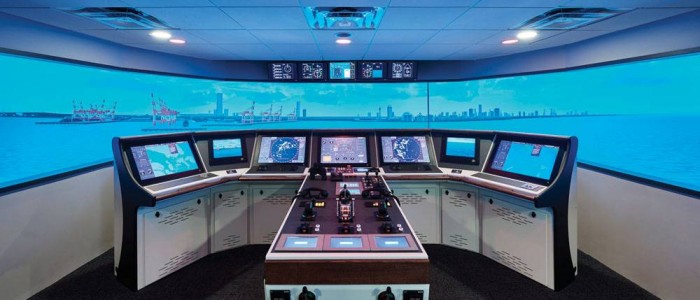TSE in California Maritime Academy
“Simulation technology has continued on a more or less steadily upward trajectory over the last ten years,” said Sam Pecota, Director of Simulation, California Maritime Academy, “The clarity and fidelity of our current full mission simulators is significantly superior to that which was possible at the turn of the century. But this improvement is mainly a matter of degree, not a total revolution. That sort of paradigm shift in simulation training may by coming soon however, with the introduction of wearable devices like Google Glass and Microsoft HoloLens.”
Pecota is not alone, as there has been a palpable advancement and investment in next-generation simulation technology globally.
“Twenty years ago simulation was an extremely limited, extremely complex, and extremely expensive training tool,” said Capt. Ted Morley, Chief Operations Officer of Maritime Professional Training. (MPT) “Advances in technology have sparked tremendous improvement in the quality of simulation and in what simulation can do. MPT installed the first privately owned simulation facility in 2002, in the ensuing years we have had an ongoing upgrade system that has allowed our systems to grow and stay at the cutting edge. The biggest changes we see now is integration of systems, the ability of today’s simulators to take very complex real-world systems and rather than simulate them, today’s simulators can generate and feed the necessary data to stimulate that equipment.”
While certainly not the only game in town, Transas has been a driver in delivering latest simulation technologies, integrated in increasingly complex models to deliver as real of a feel as a mariner can get without actually getting wet.
“From our perspective there has been an increase in simulation activity in the last months, and in fact a general upward trend in demand for some time now,” said Neil Bennett, Sales, Transas Americas, Inc. “ I think there is an ever widening acceptance of the value of simulation as part of maritime training.”
